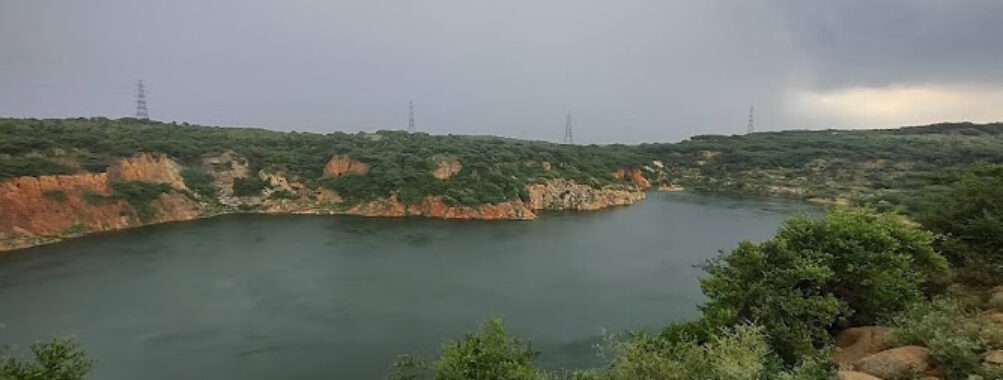
Asola Bhatti Wildlife Sanctuary
Table of Contents
Location
Places to Stay Near Asola Bhatti Wildlife Sanctuary
Find and Book a Tour
Explore More Travel Guides
No reviews found! Be the first to review!
Asola Bhatti Wildlife Sanctuary offers Delhi residents and visitors a rare opportunity to experience natural wilderness within the sprawling metropolis. Located on the city’s southern edge, this 32-square-kilometer sanctuary preserves crucial biodiversity in the heart of urban India, serving as an important ecological refuge and environmental education center.
Description
The Asola-Bhatti Wildlife Sanctuary represents the only protected area in Delhi, encompassing the northeastern rolling outliers of the ancient Aravalli hill ranges. This unique landscape features dry deciduous forest and scrubland that supports remarkable biodiversity despite its urban setting. The sanctuary includes the now-abandoned Asola Bhatti Mines, creating a distinctive topography of quarry lakes and regenerating wilderness.
At the heart of the sanctuary lies Neeli Jheel (Blue Lake), a large quarry lake that serves as a vital water source for local wildlife. The sanctuary supports over 200 species of birds, making it a significant birding destination, along with mammals including leopards, jackals, nilgai, blackbuck, and various species of deer. The diverse flora includes native plants adapted to the semi-arid environment, contributing to the region’s ecological stability.
Key Features
- Delhi’s only wildlife sanctuary spanning 32 square kilometers
- Home to over 200 bird species and diverse mammalian wildlife
- Neeli Jheel (Blue Lake) – a scenic quarry lake
- Ancient Aravalli hill landscape with unique geological features
- Network of walking trails through varied ecosystems
- Environmental education programs and visitor interpretation center
- Seasonal streams and watercourses supporting aquatic life
- Native flora including drought-resistant trees and shrubs
Best Time to Visit
The ideal time to visit Asola Bhatti Wildlife Sanctuary is during the cooler months from October to March when temperatures are pleasant for hiking and wildlife observation. Early morning visits (6:00-9:00 AM) offer the best opportunities for bird watching and spotting active wildlife. The post-monsoon period (September-November) showcases the sanctuary at its greenest, with seasonal streams flowing and increased animal activity around water sources.
How to Get There
Asola Bhatti Wildlife Sanctuary is located approximately 22 kilometers from Indira Gandhi International Airport and is accessible via Tughlakabad. Visitors can reach the sanctuary by taking the Delhi Metro to Tughlakabad station and then using local buses or auto-rickshaws for the final stretch. The sanctuary entrance is well-marked from the main road, and parking facilities are available for those traveling by private vehicle.
Tips for Visiting
- Bring binoculars for optimal bird watching and wildlife observation
- Wear comfortable hiking shoes suitable for rocky and uneven terrain
- Carry sufficient water and snacks as facilities within the sanctuary are limited
- Visit during early morning hours for the best wildlife sightings
- Follow all sanctuary rules and maintain respectful distance from wildlife
- Consider joining guided nature walks for enhanced educational experience
- Photography is permitted but avoid using flash around sensitive wildlife
- Check sanctuary opening hours and any seasonal restrictions before visiting